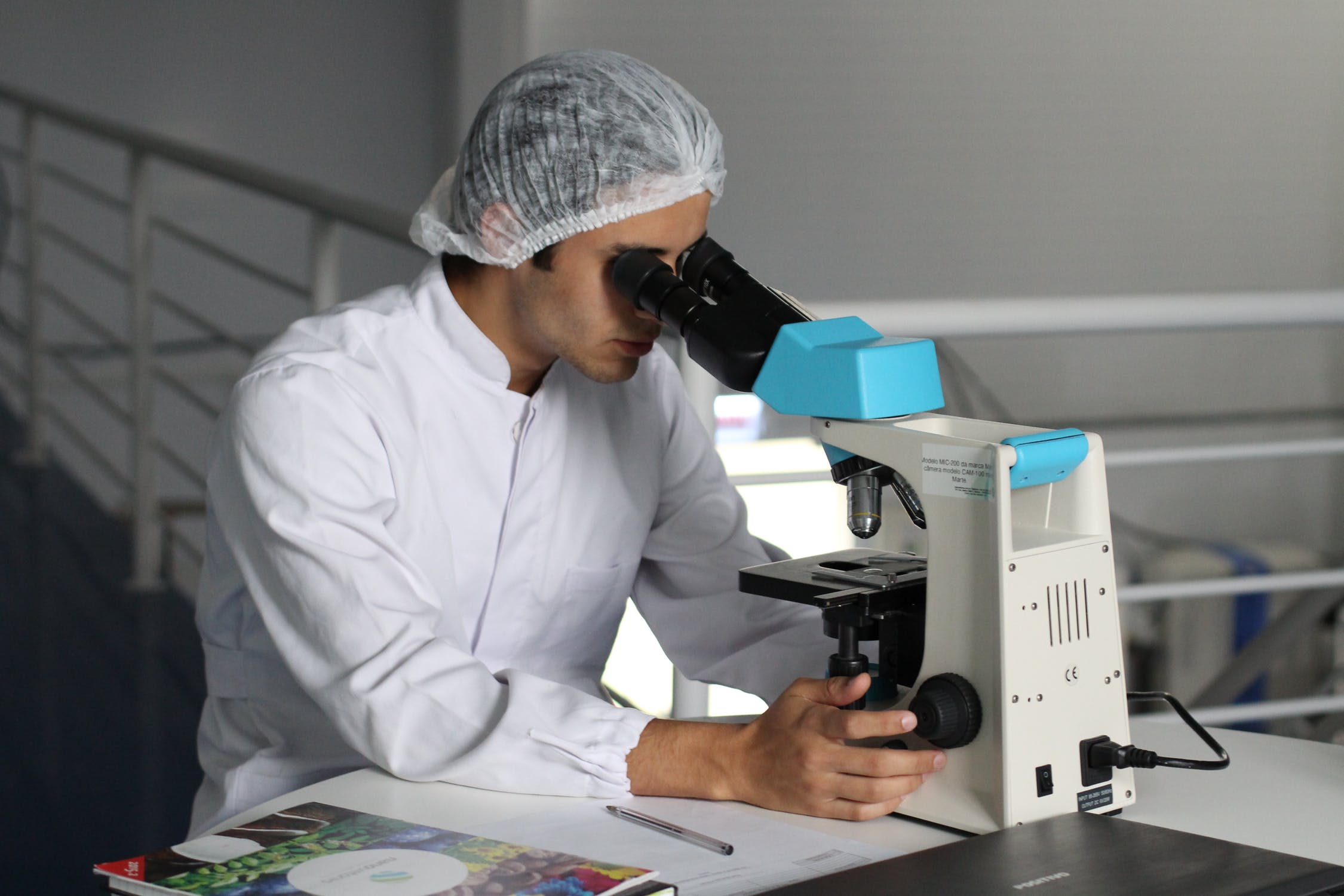We have come a long way from rudimentary surgery and herbal medicine. Now we can diagnose disease just a few decades ago we couldn’t even see. We are making headway each and every day and are coming closer than ever to eradicate illness and help those who have been injured have a life again. Knowing the newest innovations in the industry can help us as a society be open to new forms of clinical testing. It’s not too long ago, after all, that DNA analysis was barely understood by the general public.
Medical Breakthroughs
Medicine is a fast-paced world. There are so many diseases out there, both known and unknown, and for each one is a team of researchers working hard. Knowing where their efforts are going and where the future is headed can give much hope for a better future for them and their children.
Genome Editing
Genome editing is one of the more science-fiction related topics on this list, but that doesn’t make it any less real. Consider GMOs, for instance. We have genetically modified the DNA of our food to produce results that we like. This process is entirely different from selective breeding, allowing for more targeted and successful results. In fact, the only ethical reason to hate on GMOs is due to its copyrighted status. Farmers cannot continue to grow these superfoods from the seeds their produce creates and instead must buy from the companies who own the copyright again and again.
With genome editing, there remain physical and ethical limitations. Science-fiction writers have long been obsessed with the concept of the “designer baby,” where genome editing has allowed parents to pick and choose physical traits that they want their baby to have. In real medical practice, however, it will theoretically allow doctors to extract diseases and unwanted genes that lead to life-threatening and chronic conditions right from the start, like Huntington’s disease.
Robotic Surgery
Robots are far more precise than the human hands. They can also work on a minuscule scale, and thus improve, for instance, the stitching during surgery and other surgical practices. You have likely already seen images of tiny robotic hands suturing a grape skin back on. It is this very technology that is making surgeries more precise and successful to everyone involved. As technology becomes more advanced, implementing robotic surgery may become common practice. Due to the ability to ensure accuracy, as the technology and science behind it are further developed, the way in which surgery is approached could change for the better in the near future because of this.
Organ Shortage Solutions
There is an organ shortage in the medical world, which is why most are encouraged to list themselves as an organ donor. However, this problem could soon become a thing of the past. One of the biggest reasons for the shortage is due to how short a period of time organs remain viable after leaving their host. Now, this might soon not be a problem, as a team from the University of Minnesota has recently discovered a means to rewarm heart valves and vessels in animal organs.
Other solutions also include using pigs (our closest anatomical relation) to become organ donors. In the future, of course, cloning techniques and technology will likely become advanced enough to allow researchers to grow organs on an ad hoc basis and allow them to create exact replicas of the patient’s organ to ensure the best possible chances.
Personal Medicine
In the future, advancements mean doctors will be able to create targeted medicine that not only attacks the virus in question, but that can also take into account your DNA. While this technology is not yet available to us and won’t be until medicine can be created per patient, this technology is being investigated. With correct research and implementation, society could be hearing more about developments in personalized medicine before too long. The process will require AI technology as well as advances in 3D printing.
AI for Customer Service Uses
Advances in technology and AI can help relieve the burden on hospitals and help people get more targeted help right at home. Whether you are in business or in medicine, customer service is always important. With medical concerns, people are far more willing to deal with poor treatment as long as it means that they will get the treatment they need. What this is doing, however, is that it is flooding hospitals and ER emergency rooms with people who have a common cold. Through implementing the use of AI systems into the day to day society, the way in which medical problems are addressed could be revolutionized in terms of customer service.
Universal Translators
The western world is a diverse one, and one of those aspects of diversity is the multitude of languages that can be spoken. This, in turn, leads to doctor’s treating patients that do not have a clear enough grasp of English to either understand their diagnosis or to help explain what they feel. While many hospitals do have translators available, that isn’t an immediate solution.
In the future, however, we could all have universal translators that will be able to translate in real time what someone is saying to us in another language. The applications for this technology are vast and can be beneficial for those in every sector. For doctor’s, however, it could mean helping their patients more effectively.
AI and Big Data
There are two definitions of AI. The first is the science-fiction option that has been popularized throughout our media. This AI is capable of sentient thought. A person within a machine, and, in many ways, unobtainable. What is obtainable, however, is a machine that can learn, and it can do so through the power of Big Data.
Big Data is the data we produce. To prove how big “Big Data” really is consider that in 2013 the human population created a total of 2.2 zettabytes of data. One zettabyte is one trillion gigabytes. By 2020 it is estimated that we will have created over 44 zettabytes. That is a lot of data, and it is from that data that we can become smarter, but not through human interaction.
One zettabyte is too much for one person to go through, which is where AI comes in to play. This computer program will be able to use the corpus of digital information in order to accurately assess and help humans on a daily basis. Examples of this are already in existence, and they have already helped thousands of people. Take the “AI Lawyer,” created by a teenaged British programmer, who uses AI and big data to help drivers appeal against parking tickets. This bot currently has a 60% success rate and has helped over a hundred thousand people appeal their parking tickets.
The implications of this kind of technology for medicine are also vast, and many companies are already on their way to making it into a reality, such as Google with its Google Deepmind Health project. Essentially the goal is to have these AI algorithms better make sense of and use the data that we have. It can also be used to help give patients a better, more personalized and comprehensive after-care treatment. It can be used to help individuals and families alike diagnose even the simplest of colds, and more. The future of medicine is using AI to help everyone be more connected to their health and to their doctor than before – without overrunning the hospital.
Medical practitioners are already using technology to assist with their patient care. Programs are made to assist with efficiency and productivity and are created to work with current systems. Radiology information system vendors have already helped radiologists improve their service and their practice by streamlining workflow, and the improvements will only increase as technology develops.
This streamlined medical practice won’t just stop at your doctor, either. In fact, it can be used to improve the healthcare system as a whole. Using data from data medical practitioners can streamline their practices and management so that it runs more effectively and efficiently. The more efficiently a hospital can run and, in fact, work with nearby clinics, the better patients can be helped, and the more costs can be kept down.
The healthcare system is a delicate and precious setting, especially when it is paid for with a single-payer system. You don’t want to cut down on the quality of healthcare, but the less money spent on administrative tasks, the more money can be reinvested into the infrastructure and in paying for ground-breaking medical equipment, treatment, and research, not to mention freeing up space in the budget to help support the talented and dedicated people who work within it. The future of medicine is just as promising as it always was, but the difference with the next predicted a set of trends is that medicine will leave the hospitals. Treatment and even diagnoses will happen right at home, where you can better monitor your health and live a better, longer life because of it.







